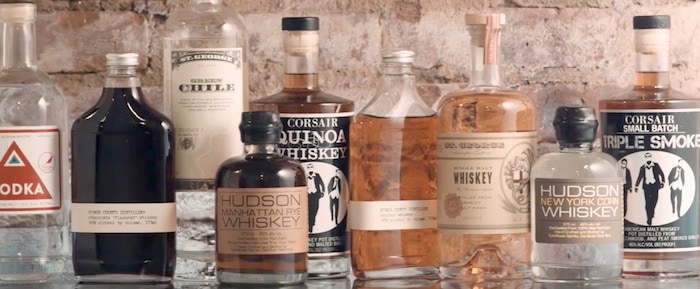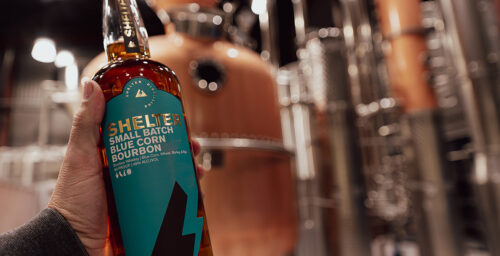If running a craft distillery wasn’t flat-out-friggin’ hard enough, the economic shutdown in the wake of the coronavirus pandemic has made it much worse. Fatally worse, some predict. It’s tough enough to compete against mega-distillers and their legendary brands, but when two of those businesses’ three sales channels are clamped off by a global pandemic, survival may be impossible for a swath of America’s nearly 2,000 U.S. craft distilleries.
Like their larger competitors, craft distillers—technically those distilling no more than 750,000 proof gallons of alcohol annually—sell products three ways: at liquor stores, from restaurants and bars and at distilleries. In the shutdown, sales through restaurants and bars and from their distilleries were all but wiped out as the country bolted for the bunker in March. Worse, during an economic slowdown, which economists predict will lead to a recession, fewer drinkers are buying pricier craft bottles. Relying strictly on retail channel sales to pay the bills will be difficult.
A fourth option, internet direct-to-consumer sales, could help over time if legislators changed outdated interstate commerce laws quickly enough to make this happen. But that’s highly unlikely as states wrestle with larger and more pressing issues.

Three years ago, small distilleries enjoyed soaring popularity amid a craft whiskey boom. And with the U.S. Congress’s passage of the Craft Beverage Modernization and Tax Reform Act in 2017, those distillers got whopper of a tax break: the reduction from $13.50 per proof gallon to $2.70 per proof gallon for the first 100,000 proof gallons distilled annually. (This is especially significant when, according to an article by the Brookings Institute, 93 percent of American distilleries produced less than 10,000 proof gallons each in 2018.) Those savings did exactly what legislators intended: created jobs and generated reinvestment into small distilleries.
Now, however, craft distillers are saying the employees they hired in the boom are now furloughed in the bunker. And with sales slashed by at least 75 percent, many wonder whether those businesses can survive until life reverts to normal. A lively discussion on a recent Bourbon Pursuit podcast mentioned a survey of 118 craft distillers that painted a grim picture of the short-term future of small distilleries: 42 percent said they can’t stay in business for more than three months in shutdown mode. Whether that number of distillers is a representative sample of the nearly 2,000 out there isn’t clear. Regardless, it represents a huge chunk of spirits makers.
Interestingly, some on the podcast’s discussion panel questioned why larger distilleries weren’t moving to buy smaller and possibly distressed distilleries and add new products to their portfolios. The reasons not to do that are ample, but here are a few: Acquisitions in recent years at mega-distillers like Beam Suntory (Sipsmith Gin), Heaven Hill (Deep Eddy Vodka, Black Velvet Blended Canadian Whiskey) and Brown-Forman (Fords Gin, Benriach, Glendronach and Glenglassaugh Scotches) were of sizeable existing distilleries.
Most notably, these going concerns make products other than their new parents’ core whiskey brands. Such brands are long past their growing pains and have well developed products, systems and distribution networks. Though mega-distilleries do allow mature spirits makers to marry into the family when deemed profitable, they rarely (if ever?) foster infant businesses.
Non-distilling spirits firms like Constellation Brands and Diageo do grow through partial- and majority-owner partnerships with smaller distillery brands. Constellation’s hook-ups with Catoctin Creek and Nelson’s Green Brier Distillery are good examples of this, but the firm has executed many billion-dollar-plus deals with bigger producers.
Same for Diageo, which has executed a number of billion-dollar buyouts while tossing a comparable $10 million pittance to Stauning, a little-known Danish whiskey maker. Non-distilling companies like these seek to expand their beverage portfolios by owning brands and growing them within their immense distribution networks. They’ll advise those partner brands from time to time, but they do not want to run them or invest in their infrastructure, which they’d have to do with a small distiller.
Craft distilleries most likely to survive the shutdown will be well capitalized and have little to no debt. A solid supply of maturing whiskey stocks on hand would be great, as would an established clear spirits brand that can be made and bottled quickly as the economy reopens. But no matter how you cut it, multiple months of lost income will hurt. Let’s hope a robust economic rebound will happen sooner than experts predict, and that many of these struggling distilleries will be counted among the survivors.








